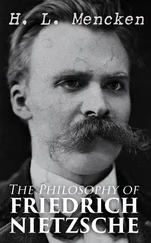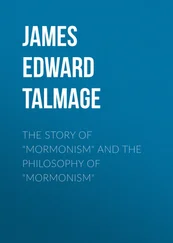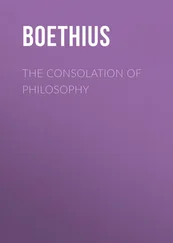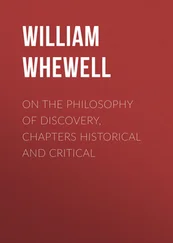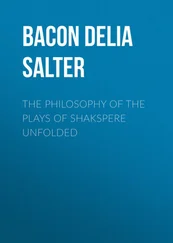To make sense of the pragmatic view, suppose that the original vague atomic sentences are classifiable both according to the bivalent scheme as true or false and according to the trivalent scheme as defi- nitely true, indefinite or definitely false, and that the truth-tables of each scheme define intelligible connectives, although the connective defined by a trivalent table should be distinguished from the similarlooking connective defined by the corresponding bivalent table. Definite truth implies truth, and definite falsity implies falsity, but indefiniteness does not discriminate between truth and falsity: although all borderline atomic sentences are indefinite, some are true and others false. As Mars dries, “Mars is dry” is first false and defi- nitely false, then false but indefinite, then true but indefinite, and finally true and definitely true. However, this attempted reconciliation of the contrasting theories does justice to neither side. For trivalent logicians, once we know that a sentence is indefinite, there is no further question of its truth or falsity to which we do not know the answer: the category of the indefinite was introduced in order not to postulate such a mystery. Similarly, for fuzzy logicians, once we know the intermediate degree of truth of a sentence, there is no further question of its truth or falsity to which we do not know the answer: intermediate degrees of truth were introduced in order not to postulate such a mystery. In formal terms, trivalent and fuzzy logics are undoubtedly less convenient than bivalent logic; the justification for introducing them was supposed to be the inapplicability of the bivalent scheme to vague sentences. If a bivalent vague language is a genuinely possible option, then the trivalent and fuzzy accounts of vagueness are mistaken. Conversely, from a bivalent perspective, the trivalent and fuzzy semantics do not fix possible meanings for the connectives, because they do not determine truth conditions for the resultant complex sentences: for example, the trivalent table for ¬does not specify when ¬Ais true in the bivalent sense. It would, therefore, be a fundamental misunderstanding of the issue at stake between theories of vagueness to conceive it as one of a pragmatic choice of language.
We already speak the language of the original question; we understand those words and how they are put together; we possess the concepts they express; we grasp what is being asked. That semantic knowledge may be necessary if we are to know the answer to the original question. 11It is not sufficient, for it does not by itself put one in a position to arbitrate between conflicting theories of vagueness. For each of those theories has been endorsed by some competent speakers of English who fully grasp the question.
Competent speakers may of course fail to reflect adequately on their competence. Although the proponents of conflicting theories of vagueness presumably have reflected on their competence, their reflections may have contained mistakes. Perhaps reflection of sufficient length and depth on one’s competence would lead one to the correct answer to the original question. But the capacity for such more or less philosophical reflection is not a precondition of semantic competence. Philosophers should resist the professional temptation to require all speakers to be good at philosophy.
We can distinguish two levels of reflection, the logical and the metalogical. In response to the original question, logical reflection involves reasoning with terms of the kind in which the question is phrased; the aim is to reach a conclusion that answers the question. For example, one might conclude by classical logic that Mars was always either dry or not dry; one might conclude by fuzzy logic that it is indefinite whether it was always one or the other. The logical level is not purely mechanical. When the reasoning is complex, one needs skill to select from the many permissible applications of the rules one sequence that leads to an answer to the question. When the reasoning is informal, one needs good judgment to select only moves that really are permissible applications of the rules. But one is still thinking about whatever the question was about. One starts only at the metalogical level of reflection to think about the semantics of the logical connectives and other expressions one employed at the logical level. For example, at the metalogical level one may assert or deny that the sentence “Mars was always either dry or not dry” is a logical truth. The rules used at the logical level are articulated only at the metalogical level.
It must be possible to think logically without thinking metalogically, for otherwise by the same principle thinking metalogically would involve thinking metametalogically, and so ad infinitum : our thinking never goes all the way up such an infinite hierarchy. What can prompt ascent to the metalogical level are hard cases in which one feels unclear about the permissibility of a given move at the logical level. One’s mastery of the language and possession of concepts leave one quite uncertain how to go on. In the case of the original question, a salient line of classical reasoning leads to a positive answer: it persuades some competent speakers while leaving others unconvinced. Even to discuss the contentious reasoning we must semantically ascend. We cannot hope to resolve the dispute undogmatically if we never leave the lower level.
The argument so far has reached two conclusions at first sight hard to reconcile with each other. First, the original question is not about thought or language. Second, to answer it adequately one must assess rival theories of vagueness in thought and language. How can that way of reaching an answer be appropriate to the original question? We might, therefore, find ourselves tempted back to the idea that somehow the original question was surreptitiously about thought or language.
On further reflection, the combination of the two conclusions is less surprising. Many non-philosophical questions that are not about thought or language cannot be resolved without inquiry into thought or language. Suppose that a court of law must decide whether Smith killed Jones. The question is not who said or thought what. Nevertheless, the crucial arguments may be over whether to trust the witnesses’ testimony. How is what they say now related to what they think now or thought then? How is what they think now or thought then related to what actually happened? Are they lying or sincere? Are their memories confused or clear? Those are questions about their thought and speech. They hold the key to whether Smith killed Jones, even though that question is not about thought about language. 12Of course, the questions about the thought or talk are not about it in isolation from what it is thought or talk about: they are relevant because they concern the relation between the thought or talk and what it is about.
The court must decide the issue on the evidence before it. In a criminal case, does the evidence put it beyond reasonable doubt that Smith killed Jones? In a civil case, does the evidence make it more probable than not? If the court is really deciding a question about testimonial evidence, that is already a question about talk. 13But the question about the evidence arises in virtue of its bearing on the primary question, whether Smith killed Jones. Indeed, the question about the evidence is exactly a question about its bearing on the primary question. So the point stands.
Historians are often in a similar position. They want to know what happened. The way to achieve that is largely by considering documents, linguistic accounts of what happened – not in isolation, but in relation to what they represent. Most obviously, historians want to know whether the documents accurately represent what happened, but to answer that question they must in turn ask about their provenance: who produced them, when and why? Thus the history of the events of primary interest requires a history of thought and talk about those events. Those histories typically overlap, for thought or talk about some part of a complex human event is often another part of the same complex event.
Читать дальше


